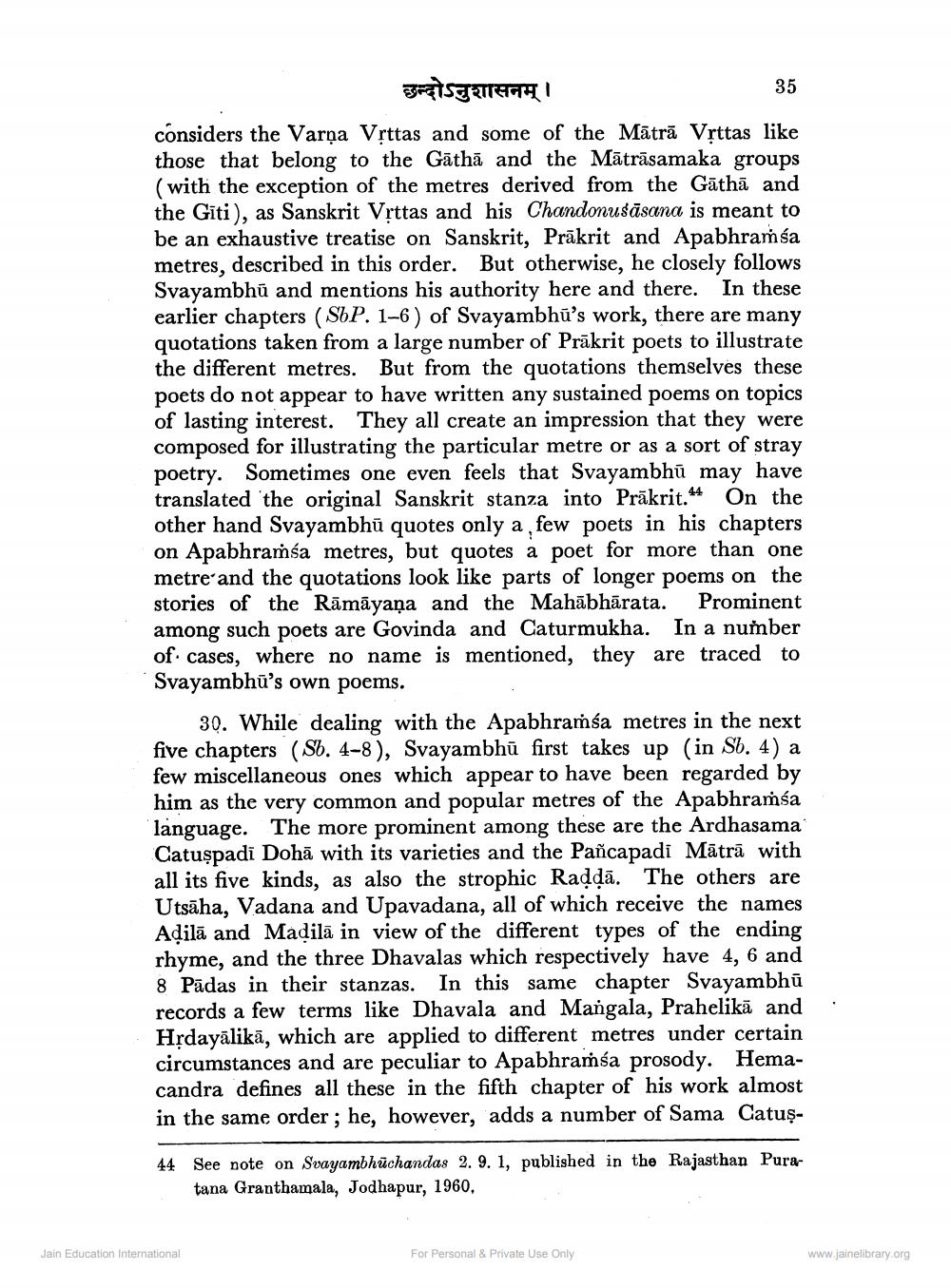________________
छन्दोऽनुशासनम् ।
35 considers the Varņa Vịttas and some of the Mātrā Vịttas like those that belong to the Gāthā and the Mātrāsamaka groups (with the exception of the metres derived from the Gāthā and the Gīti), as Sanskrit Vrttas and his Chandonusāsana is meant to be an exhaustive treatise on Sanskrit, Prākrit and Apabhraíba metres, described in this order. But otherwise, he closely follows Svayambhū and mentions his authority here and there. In these earlier chapters (SWP. 1-6) of Svayambhū's work, there are many quotations taken from a large number of Prākrit poets to illustrate the different metres. But from the quotations themselves these poets do not appear to have written any sustained poems on topics of lasting interest. They all create an impression that they were composed for illustrating the particular metre or as a sort of stray poetry. Sometimes one even feels that Svayambhū may have translated 'the original Sanskrit stanza into Prākrit.44 On the other hand Svayambhü quotes only a few poets in his chapters on Apabhraíśa metres, but quotes a poet for more than one metre and the quotations look like parts of longer poems on the stories of the Rāmāyaṇa and the Mahābhārata. Prominent among such poets are Govinda and Caturmukha. In a nuřber of cases, where no name is mentioned, they are traced to Svayambhū's own poems.
30. While dealing with the Apabhraṁsa metres in the next five chapters (Sb. 4-8), Svayambhū first takes up (in Sb. 4) a few miscellaneous ones which appear to have been regarded by him as the very common and popular metres of the Apabhramba language. The more prominent among these are the Ardhasama Catuspadi Dohā with its varieties and the Pañcapadi Mātrā with all its five kinds, as also the strophic Raddā. The others are Utsāha, Vadana and Upavadana, all of which receive the names Adilā and Madilā in view of the different types of the ending rhyme, and the three Dhavalas which respectively have 4, 6 and 8 Pādas in their stanzas. In this same chapter Svayambhū records a few terms like Dhavala and Mangala, Prahelikā and Hệdayālikā, which are applied to different metres under certain circumstances and are peculiar to Apabhraíba prosody. Hemacandra defines all these in the fifth chapter of his work almost in the same order; he, however, adds a number of Sama Catus
.
44 See note on Svayambhuchandas 2. 9. 1, published in the Rajasthan Pura
tana Granthamala, Jodhapur, 1960,
Jain Education International
For Personal & Private Use Only
www.jainelibrary.org




